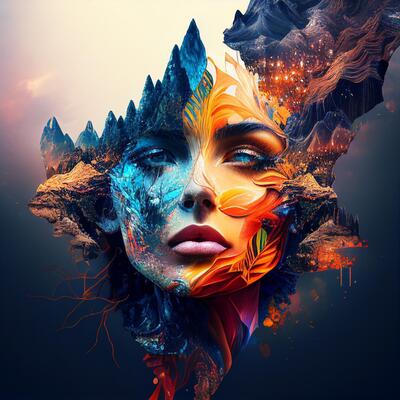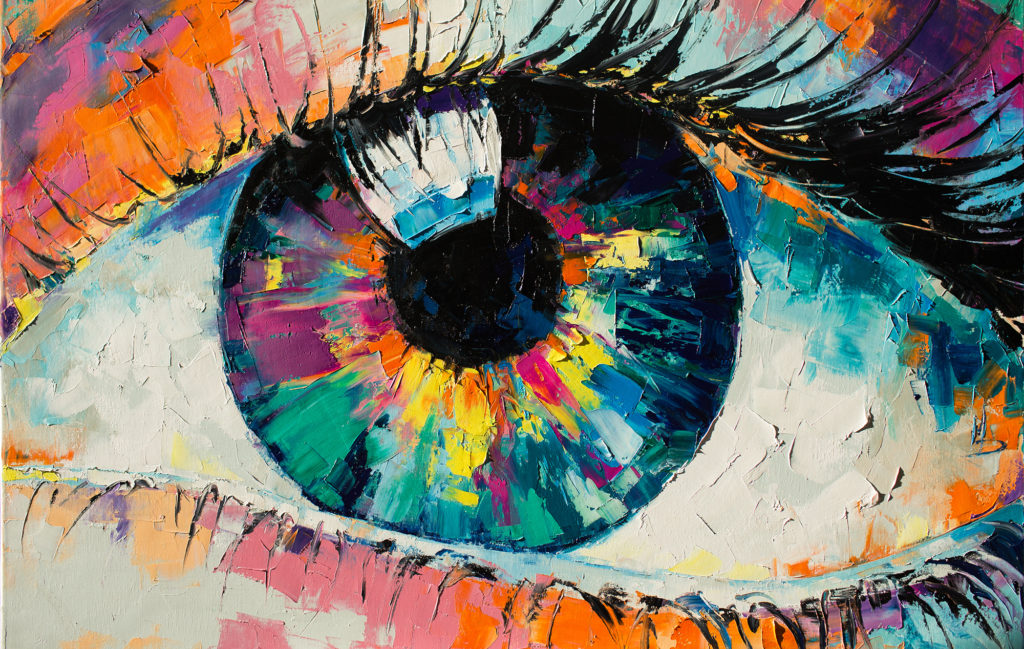A Deep Dive into the Most Renowned Trump Artworks of Recent Years
Wiki Article
Getting Started on a Visual Journey With the Lyrical Analyses of Nature in Stylist Landscapes
Each brushstroke, each play of light and darkness, and each shade selection in their jobs speaks volumes about the musicians' deep connection to nature and their capacity to equate its charm onto the canvas. As we explore the lyrical analyses of nature in Stylist landscapes, we are welcomed to submerse ourselves in a globe where reality and feeling intertwine, using a glance into the artists' extensive appreciation for the all-natural globe.The Fascinating Brushstrokes of Claude Monet
Claude Monet's proficiency of brushstrokes goes beyond simple method, imbuing his landscapes with an aerial high quality that enthralls and captivates viewers - trump art. His innovative use of color and light, incorporated with his distinctive brushwork, develops a sense of movement and life within his paintings. Monet's prominent collection of works depicting water lilies and his renowned haystacks showcase his ability to capture the fleeting impacts of light and atmosphere
Enjoying Light and Darkness With Camille Pissarro
Personifying a similar respect for the interaction of light and darkness, Camille Pissarro's artistic vision unfolds as a harmonious exploration of the all-natural world's luminous subtleties. Pissarro, a key figure in the Impressionist motion, masterfully recorded the vibrant relationship in between light and darkness in his landscapes. His proficient use of color and brushwork enabled him to convey the refined shifts in light that define various times of day and seasons.Pissarro's paints commonly include dappled sunlight filtering via leaves, casting detailed patterns of light and darkness on the planet below. In works such as "Hoar Frost, the Effect of Snow, Pontoise," Pissarro skillfully illustrates the crisp brightness of winter season sunshine compared with the cool shadows that specify the snowy landscape. By accepting both light and shadow in his make-ups, Pissarro invites viewers to submerse themselves in the natural appeal and short-term results of light on the planet around them.

Through Pissarro's works, we are reminded of the transformative power of light and darkness, welcoming us to stop briefly and appreciate the fleeting moments of beauty existing in the day-to-day landscapes that border us.
A Symphony of Color Styles by Edgar Degas
Edgar Degas coordinates a vivid harmony of colors in his masterful art work, infusing his structures with a vibrant interaction of tones that captivate the viewer's look. Understood mainly for his ballet professional dancers and intimate scenes of Parisian life, Degas adeptly manipulated colors to share mood and activity in his paintings. trump art. His use strong, contrasting colors and refined tonal variations produced a feeling of depth and vibrancy within his worksDegas' shade palette often included rich blues, deep environment-friendlies, and warm oranges, which he used with positive brushstrokes to catch the significance of his subjects. Whether portraying a ballerina mid-performance or a group of friends conversing at a cafe, Degas' shades not just illustrated the scene however likewise stimulated a feeling of feeling and energy.
Additionally, Degas' trial and error with light and shadow included an additional layer of intricacy to his color compositions, boosting the general environment of his paintings (trump art). With his skillful adjustment of shade, Degas created an aesthetic symphony that continues to reverberate see post with viewers today
Exploring Nature's Serenity With Berthe Morisot
Berthe Morisot's creative vision uses a tranquil departure from the vibrant shade symphonies of Edgar Degas, as she records the tranquility of nature in her expressive landscapes. Recognized for her fragile brushwork and intimate portrayals of day-to-day life, Morisot's landscapes exhibit a sense of tranquility and consistency.Morisot's paintings commonly feature soft, soft tones that check this site out share a feeling of peace and calmness. Her works, such as "The Cradle" and "Summer season's Day," display her capacity to record the subtle charm of nature in such a way that is both contemplative and calming to the visitor.
Unlike a few of her Impressionist counterparts that concentrated on dynamic structures and vibrant colors, Morisot chose to develop mild, introspective scenes that invite the audience to pause and reflect. Via her skillful usage of light and darkness, Morisot creates a sense of tranquility that reverberates with the audience on a deep psychological level.
The Psychological Landscapes of Vincent Van Gogh
Vincent Van Gogh's landscapes clearly share a deepness of emotion through their vibrant brushwork and meaningful usage of color. The Dutch post-impressionist artist is renowned for his capacity to record raw and intense feelings in his paints, transcending typical representations of nature. Van Gogh's tumultuous individual life, noted by psychological wellness struggles, significantly influenced his art, infusing his landscapes with a sense of anxiousness, sorrowful, or pep.In jobs such as "Starry Night" and "Wheatfield with Crows," Van Gogh's swirling brushstrokes and vibrant color selections evoke a profound psychological response from viewers. The turbulent you can look here skies and agitated landscapes in his paints reflect his inner turmoil and psychological turbulence, inviting viewers to dig into the complexities of his mind.
Van Gogh's distinct aesthetic language, defined by overstated viewpoints and bold usage of shade, creates landscapes that reverberate with audiences on a deeply emotional degree. Through his art, Van Gogh invites us to see nature not equally as an outside truth yet as a mirror of our innermost feelings and emotions.
Final Thought
Finally, the impressionist landscapes of artists such as Claude Monet, Camille Pissarro, Edgar Degas, Berthe Morisot, and Vincent Van Gogh supply a captivating and one-of-a-kind visual interpretation of nature. With their use brushstrokes, light, color, and feeling, these musicians have created a symphony of photos that evoke a feeling of peacefulness and charm in the environment. Their jobs remain to motivate and enchant customers with their lyrical interpretations of the landscapes around us.Each brushstroke, each play of light and darkness, and each shade option in their jobs talks volumes concerning the musicians' deep connection to nature and their capability to convert its charm onto the canvas. His cutting-edge usage of color and light, integrated with his unique brushwork, produces a sense of activity and life within his paints. His adept use of color and brushwork allowed him to communicate the refined changes in light that define various times of day and seasons.

Report this wiki page